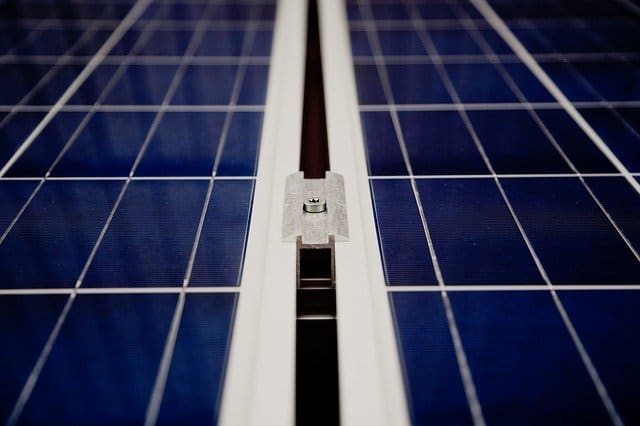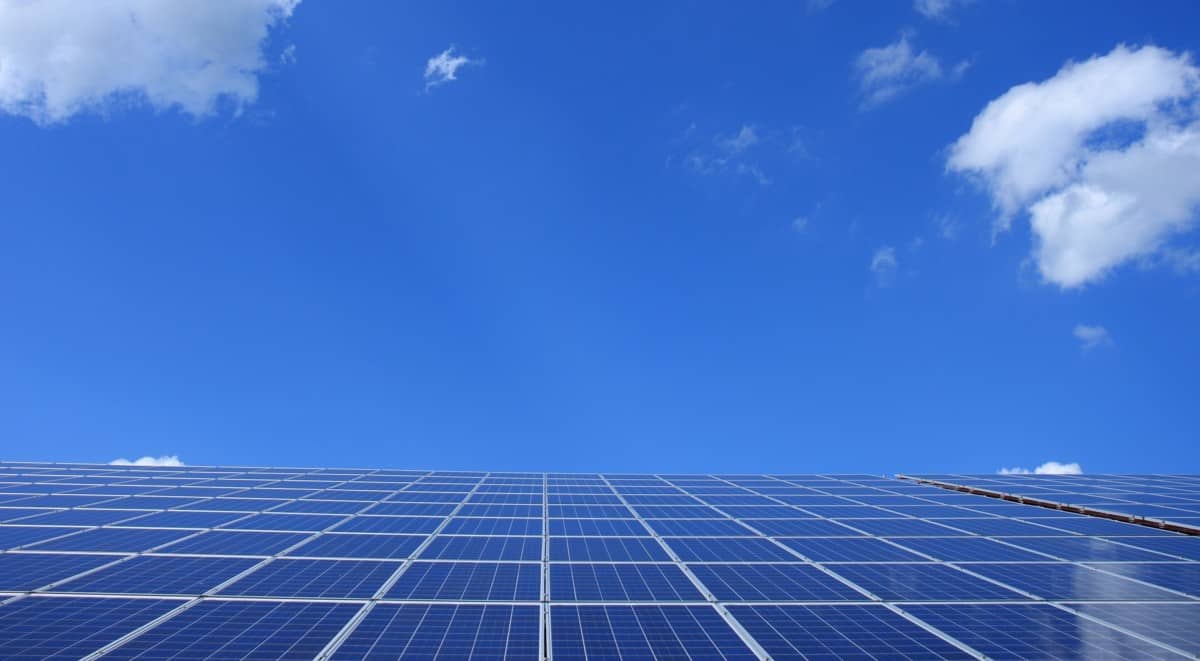So, how efficient are solar panels? Well, most of these devices have an efficiency that ranges between 15% and 20%. The current panels on the market aren’t 100% and this means that most of the energy is usually lost during the harvesting process. The efficiency of solar panels is determined by factors such as type, design, weather conditions, and orientation.
Simply watch my video below, it explains everything
How efficient are Solar Panels?
The average solar panel products aren’t as efficient as you would expect. This is because these devices are made with semi-conductors that partially convert sunlight into electric energy. Well, the semiconductors partially function since they only capture a smaller percentage of the light that they receive.
Generally, sunlight energy is normally dispensed in a broad spectrum wavelength. So, the characteristics of the semiconductors used to make the solar panels as well as the design of the solar cells determine the effectiveness of the captured wavelengths. You will find that some of the light energy is also reflected while there are some rays that simply pass through the devices.
Besides that, some of the rays’ wavelengths will quickly get converted into heat before the solar cells can fully absorb them. The overall impact is a significantly reduced energy production.
The current design of a typical silicon solar panel has an average efficiency of 22%. Premium solar panels made with high-quality silicon, on the other hand, can have an efficiency of almost 27%. However, there are a few high-end solar panels that can deliver an impressive efficiency of 46% under laboratory conditions.
This means that there is still a need for extensive research to design solar panels with more efficiency. Modern research studies are crucial in implementing panels with effective semiconductors and cells that have a higher conversion of sunlight into electrical energy.
With the recent development of perovskites semiconductors, the idea of consumers getting more efficient solar panels is quite promising. Perovskites are expected to create a new generation of more efficient solar panels with thin films of solar cells that are more effective in enhancing the conversion rate. Additionally, they are also expected to be cheaper than the current silicon solar cells on the market.
Solar Panel Design and Efficiency
The efficiency of solar panels often depends on the design. These devices are engineered with different methods in order to capture the different light energy frequencies. The following are the most common design options with their level of efficiency:
- Integrated photovoltaic panels: they are very popular since they help to effectively mitigate the esthetic issues that most solar panels design pose. While integrated photovoltaic panels are quite expensive due to their esthetic appeal, they are less efficient. The efficiency of integrated photovoltaic panels can range between 10 and 22%
- Thin-film solar-cell panels: they implement the latest photovoltaic technology. These panels are designed with one or more layers of thin photovoltaic cell films. The substrate cover may be metal, glass, or plastic. They are, therefore, lighter and quite versatile. These panels are also expensive and have very little efficiency that ranges between 15 and 22%.
- Monocrystalline silicon panels: these devices have dark colors and rounded edges. They are the most efficient types of photovoltaic solar panels. These products contain a single silicon panel and due to the high silicon content, they are usually very expensive. Generally, you need to install fewer monocrystalline panels since they have cells that are effective in converting energy into electricity. The efficiency of monocrystalline solar panels ranges between 22-27%.
- Polycrystalline silicon panels: They normally have a blue-speckled color and a square cut. These products contain low amounts of multi-layered silicon panels. They are significantly cheaper than the monocrystalline types of panels but aren’t as highly effective. Even so, these panels still work to effectively convert solar into electric energy. Currently, the efficiency of polycrystalline solar panels is between 15 and 22%.

How to Increase the Efficiency of Solar Panels
You can increase the efficiency of solar cells by considering the following factors:
Buy High Concentrated Photovoltaic (CPV) Solar Panel Cells
Solar panels’ efficiency can be improved by choosing high-quality panels with CPV cells. CPV’s principle is based on focusing sunlight on the solar cells. Generally, traditional solar panels usually have a peak efficiency of 22%. On the other hand, CPV panels peak at 46% efficiency.
But you should be prepared to pay more if you want to buy CPV cells. Market analysis indicates that the price of CPV panels can be up to more than the basic traditional PV panels.
Buy Efficient Solar Panel Models
Note that PVC solar panels are not only expensive but also not easy to find. If you are unable to access them, then you can still buy solar panels that are more efficient.
These devices are made up of photovoltaic cells that convert energy from the sunlight into beneficial usage electricity. However, the basic solar panel isn’t even 50% effective and there some of the energy from the sun is usually lost.
However, solar technology has improved over the years and you can now get more efficient solar panels. They are designed with improved structure as well as material. These commercial models can help to greatly improve the efficiency of solar panels.
Get an Expert to Handle the Installation Process
It’s clear that the installation process plays a crucial in influencing the efficiency of solar cells. In case your panels aren’t installed correctly, then chances are that you might not receive the optimal amount of energy generated by the sunlight.
For instance, if the orientation angle of the solar panels is wrong, the devices will certainly fail to collect a reasonable amount of sunlight at the end of the day. So, it’s important that you get an experienced professional to handle the installation process for you.
Generally, the best installation angle for solar panels should be between 18 and 36 degrees. This way, your panels will end up receiving maximum sunlight during exposure.
It’s also worth noting that the orientation may vary depending on the location. Those who are in the southern hemisphere need to ensure that the solar panels are oriented towards the north. Meanwhile, those who are in the northern hemisphere should ensure that their devices are oriented towards the south.
But even with expert installation, it’s also evident that temperature plays a crucial role in determining the efficiency of solar panels. As the surrounding temperatures increase, the effectiveness of these devices tends to go down.
That’s why there should be adequate gaps between the panels and the roof. Experts have a deeper understanding of this and they can effectively arrange the panels on the roof during installation to allow efficient air movements. This will help to maintain the efficiency of the solar panels by preventing them from quickly overheating.
Consider Using a Management Software
Technology has improved significantly and after installing your panels, you can monitor the output consistently by using a relevant software program. It’s generally important to monitor the efficiency of the solar panels because this will give you the best overview of your devices are offering value for money. Besides that, you will be in a better position to know when the effectiveness of the panels has dropped.
An application such as Supple can help you to keep an eye on your solar energy generation. This software can be used to monitor the panels and give the relevant output details. Besides that, it’s quite effective in detecting inefficiencies or unexpected drops in energy supply. This way, you will be able to detect and fix problems on time to ensure that efficiency is maintained.
Clean the Solar Panels
Dirt and accumulated debris usually interfere with the efficiency of solar cells. They block the sun rays from directly hitting the surface of the panels. As a result, the cells will fail to get enough light supply. While the moving parts of the solar panels need very little maintenance, you need to keep an eye on the panels’ surfaces.
For maintenance of a high level of efficiency, ensure that you clean your panels’ surfaces frequently, especially after it rains heavily or when it’s dusty and windy. It’s estimated that accumulated dirt and dust can cause an annual drop of efficiency by 5%. However, this percentage can increase depending on your location.
Install Your Solar Panels in Clear Spaces
Don’t install your panels in shaded areas because you will be fully preventing them from accessing adequate sunlight. Shade causes a huge interference in the generation of electricity. Understand that even if it’s only one photovoltaic cell that’s shaded, the impact usually significant. This is because the single shaded cell will also affect how the neighboring cells produce electricity.
The Bottom Line
More people and businesses are now investing in solar panels. They are efficient, cost-effective in the long run, and environmentally friendly.
However, one thing that’s clear is that the solar panels efficiency isn’t quite high. The general efficiency ranges between 18 and 22%. However, if you consider using high-quality panels or CPV solar panels, then this efficiency can increase to 42-46%. More information can be found here.
It’s also important to consider using a professional installer and effectively maintaining your solar panels. This way, you will maintain and improve the efficiency of these devices that are used to generate eco-friendly electricity.
Recent Posts
Understanding Energy and Electricity: The Power For Progress
Energy and Electricity Energy and electricity are integral components of modern life, powering everything from homes and businesses to transportation and communication. Without them, the...
The Future of Wind Energy The future of wind energy is set to play a critical role in addressing global energy needs while combating climate change. As renewable energy sources like wind and...


